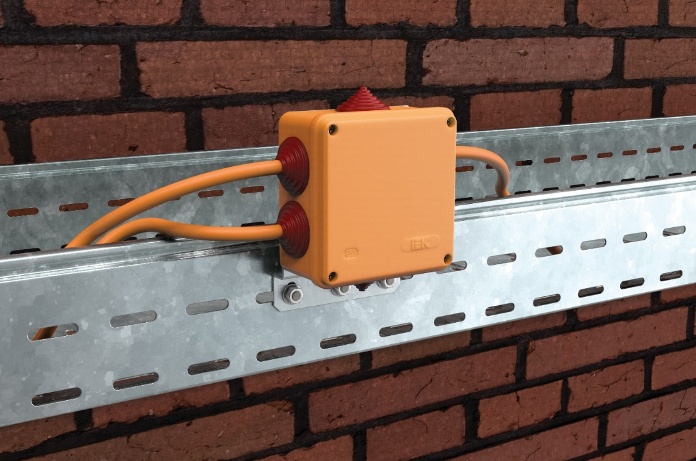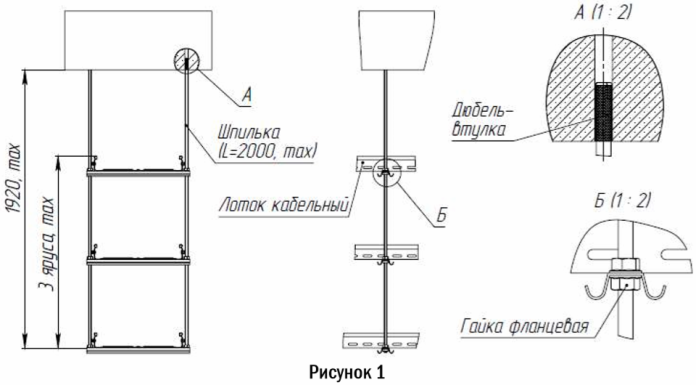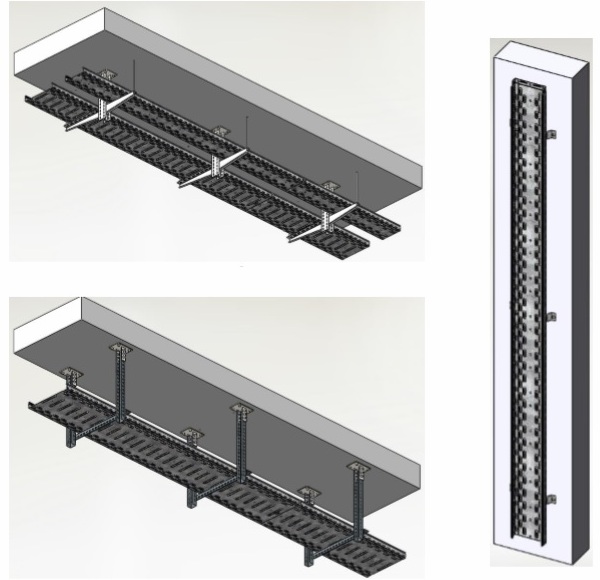Categories: Featured Articles » Electrician Secrets
Number of views: 5606
Comments on the article: 2
“Do it right!”, Or how to mount fire-resistant cable lines
Proper installation provides more than 50% of the ability of a fire-resistant cable line (OKL) to resist fires). We'll figure out what “competent installation” means.
What experts do not take into account
The concept of “fire-resistant cable line” appeared in 2013. In essence, a fire-resistant cable line is a ready-made, laboratory-tested set of equipment for installation: a special cable and mesh for its suspension, metal trays, junction boxes, couplers, dowels, anchors.
The fire-resistant cable line must have a certificate of conformity, which prescribes the installation procedure: all possible components and their combinations are considered, for each version of the cable line configuration, the operating time and fire resistance limits are indicated.
If you follow the instructions from the certificate, then it is impossible to make a mistake when installing OKL. However, in practice, many installers work according to the usual scheme: they attach a fire-resistant cable with plastic clamps to the floors, tie with a cable tie to the cable, pull it into the corrugation, which is laid in the cable channel. It is with this design that difficulties arise.
Fire-resistant cable lines are designed to provide the following systems:
-
Emergency lighting;
-
Lamps indicating the direction of evacuation;
-
Fire warning system;
-
Fire extinguishing and smoke removal systems;
-
Lifts for fire departments;
-
Electrical panels for connecting fire fighting equipment, for example, in parking lots;
-
Security alarm;
-
Shields of operating rooms and hospital resuscitation units.
What is the danger of the "old" approach
When exposed to an open flame, combustible screeds and fasteners melt, the cable (albeit in a special fireproof sheath) falls down, breaks and loses its working capacity. The requirements for fire resistance limits are not maintained, the operation of the most important life support systems of buildings is disrupted, the time for evacuating people is significantly reduced.
To avoid such situations, after the appearance of certified fire-resistant cable lines, the supervisory authorities, when accepting work, carefully check whether the declared OKL exists as part of the presented system. And if there is no certificate or it is only nominally, and the installation instructions are not followed, the facility will not be commissioned.




Why you can be sure of the recommendations
Obtaining a certificate necessarily involves passing tests in an accredited laboratory. So, the line discussed above was tested at the IEK GROUP research center. In a confined space, cable lines (cable, tray, fasteners, depending on the surface - ceiling, wall or floor) were collected and simulated a fire.
According to the methodology described in GOST, the temperature in the test chamber was increased, and after the first 15 minutes it reached 1000 aboutC. Each cable had its own current source and receiver in the form of a light bulb. As soon as the last one stopped burning, experts recorded the time the line was turned off. Based on the results of the test, OKL assigned classes from E15 to E90, where E is the fact that the signal was stored, and the number is the time that the system withstood until the network was broken.

Laboratory fire test cable line
Is it possible to increase the level of fire resistance of a fire-resistant cable line
It was established that the route based on metal trays withstands complete destruction of 90 minutes or more. True, the indicator of signal conservation E for such a line is not always equal to 90. In order to increase fire resistance, an integrated approach is needed. It is allowed to use special refractory paints for the cable.
Additional protection against fire will be provided by the building box in which the cable support system should be sewn. Also, fire-resistant insulation materials in the partitions between the premises where the line passes increase the fire resistance of the cable route. As a result, the indicator E can be increased several times.
How to properly design and install fire resistant cable lines
1. Depending on the object, determine the required uptime of the fire-resistant cable line.
2. Select the type of cable, its size and design in accordance with GOST 31565-2012.
3. Choose a cable support system and method of its fastening.
4. Carry out the installation strictly in accordance with the instructions.
6. Do not fasten OKL to flammable surfaces whose fire resistance is lower than OKL fire resistance. This is strictly prohibited!
7. Do not lay incombustible cables in the OCL.
8. All cable connections should only be made in fireproof mounting boxes.
Material prepared by the press service of IEK GROUP
See also at i.electricianexp.com
:
